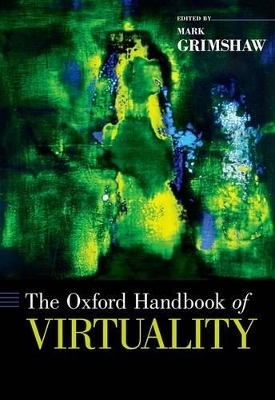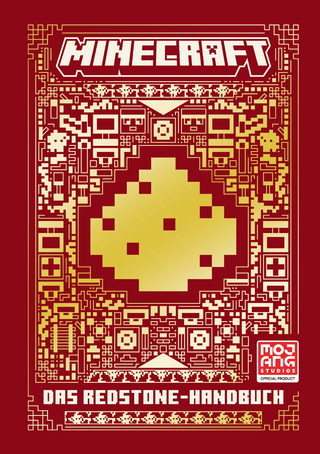
The Oxford Handbook of Virtuality
Oxford University Press Inc (Verlag)
978-0-19-982616-2 (ISBN)
As this comprehensive and multi-disciplinary anthology makes clear, virtuality has a pedigree that pre-dates the computer age and modern virtual worlds, a pedigree that can be traced back to classical mythology and beyond. Equally, the concept of virtuality is not the province of one field of study alone but is the foundation and driving force of many, both theoretical and applied.
Our conceptualizations and applications of virtuality are multiple, as is shown across the nine sections of the book that move from philosophy to technologies and applications before returning to philosophy again for a discussion of the utopias and dystopias of virtuality. The almost 50 essays contained within range freely across subjects that include the potential of virtuality, ethics, virtuality and self, presence and immersion, virtual emotions, image, sound and literature, computer games, AI and A-Life, Augmented Reality and Real Virtuality, law and economics, medical and military applications, religion, and cybersex.
Throughout, contributors discuss differences between virtuality, reality, and actuality, in debates filtered through the lenses of the disciplines represented here, and speculate on future directions. It is not at all clear that there are differences and, if such distinctions are to be found, the boundaries between virtuality, reality, and actuality continually shift as ideas, modes of organization, and behaviors constantly flow from one to the other regardless of direction. The Handbook presents no unified definition of virtuality to comfort the reader, rather a multiplicity of questions and approaches underpinned by provocative statements that should further fuel the debates surrounding our notions of virtuality.
Mark Grimshaw is The Obel Professor of Music at Aalborg University, Denmark. He writes extensively on sound in computer games with a particular interest in emotioneering and the use of biofeedback for the real-time synthesis of game sound. He also writes free, open source software for virtual research environments (WIKINDX) and is investigating the uses of sonification to facilitate creativity in the context of such knowledge tools.
Mark Grimshaw: Introduction ; I. The Foundations of Virtuality ; 1. Bruce Damer & Randy Hinrichs: The virtuality and reality of avatar cyberspace ; 2. Philip Brey: The physical and social reality of virtual worlds ; 3. Brian Massumi: Envisioning the virtual ; 4. Andre Nusselder: Being more than yourself: Virtuality and human spirit ; 5. Maria Beatrice Bittarello: Mythologies of virtuality: 'Other space' and 'shared dimension' from ancient myths to cyberspace ; 6. Michael R. Heim: The paradox of virtuality ; II. Psychology & Perception ; 7. James K. Scarborough & Jeremy N. Bailenson: Avatar psychology ; 8. Elizabeth J. Carter & Frank E. Pollick: Not quite human: What virtual characters have taught us about person perception ; 9. Jean-Claude Martin: Emotions and altered states of awareness: The virtuality of reality and the reality of virtuality ; 10. Angela Tinwell: Applying psychological plausibility to the Uncanny Valley phenomenon ; 11. Deborah Abdel Nabi & John P. Charlton: The psychology of addiction to virtual environments: The allure of the virtual self ; 12. Giuseppe Riva & John A. Waterworth: Being present in a virtual world ; 13. Gordon Calleja: Immersion in virtual worlds ; III. Culture & Society ; 14. Paul C. Adams: Communication in virtual worlds ; 15. David Rudd: So good, they named it twice? A Lacanian perspective on Virtual Reality from literature and the other arts ; 16. Erik Champion: History and cultural heritage in virtual environments ; 17. Julie M. Albright & Eddie Simmens: Flirting, cheating, dating, and mating in a virtual world ; 18. Stale Stenslie: Cybersex ; 19. Robert M. Geraci: A virtual assembly: Constructing religion out of zeros and ones ; 20. William Cheng: Acoustemologies of the closet ; IV. Sound ; 21. Karen Collins: Breaking the fourth wall? User-generated sonic content in virtual worlds ; 22. Tom A. Garner & Mark Grimshaw: Sonic virtuality: Understanding audio in a virtual world ; 23. Trevor S. Harvey: Virtual worlds: An ethnomusicological perspective ; 24. Martin Knakkergaard: The music that's not there ; V. Image ; 25. Gary Zabel: Through the looking glass: Philosophical reflections on the art of virtual worlds ; 26. Anthony Steed: Recreating visual reality in virtuality ; 27. Patrick Lichty: The translation of art in virtual worlds ; 28. Simon J. Harris: Painting, the virtual and the celluloid frame ; VI. Economy & Law ; 29. Greg Lastowka: Virtual law ; 30. Vili Lehdonvirta: Virtuality in the sphere of economics ; VII. A-Life & Artificial Intelligence ; 31. Phil Carlisle: On the role of "digital actors" in entertainment-based virtual worlds ; 32. Tim Taylor: Evolution in virtual worlds ; 33. David G. Green & Tom Chandler: Virtual ecologies and environments ; 34. Gabriel Robles-De-La-Torre: Computational modeling of brain function and the human haptic system at the neural spike level: Learning the dynamics of a simulated body ; VIII. Technology & Applications ; 35. John A. Waterworth & Eva L. Waterworth: Distributed embodiment: Real presence in virtual bodies ; 36. Alan Chalmers: Level of realism: Feel, smell and taste in virtual environments ; 37. Mark Billinghurst, Huidong Bai, Gun Lee, Robert Lindeman: Developing handheld augmented reality interfaces ; 38. Keysha I. Gamor: Avoidable pitfalls in virtual world learning design ; 39. Giuseppe Riva: Medical clinical uses of virtual worlds ; 40. Roger Smith: Military simulations using virtual worlds ; IX. Utopia & Dystopia ; 41. Charles M. Ess: Ethics at the boundaries of the virtual ; 42. Patrice Flichy: The social imaginary of virtual worlds ; 43. David Kreps: Virtuality and humanity ; 44. Andrea Hunter & Vincent Mosco: Virtual Dystopia ; Tom Boellstorff: An afterword in Four Binarisms ; Index
| Reihe/Serie | Oxford Handbooks |
|---|---|
| Zusatzinfo | 97 illustrations |
| Verlagsort | New York |
| Sprache | englisch |
| Maße | 251 x 183 mm |
| Gewicht | 1355 g |
| Themenwelt | Mathematik / Informatik ► Informatik ► Web / Internet |
| Informatik ► Weitere Themen ► Computerspiele | |
| ISBN-10 | 0-19-982616-1 / 0199826161 |
| ISBN-13 | 978-0-19-982616-2 / 9780199826162 |
| Zustand | Neuware |
| Informationen gemäß Produktsicherheitsverordnung (GPSR) | |
| Haben Sie eine Frage zum Produkt? |
aus dem Bereich


